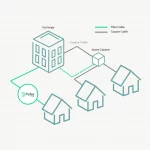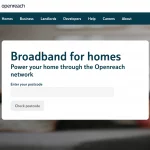Get Ready for Average Speeds in UK Broadband ISP Advertising
Tomorrow marks the first day of May and it will be an important month for broadband providers in the United Kingdom, not least because a new rule will be enforced, which requires them to start promoting “average speeds” (a median measured at peak time – 8pm to 10pm) for their public packages.
At present most of us have become familiar with seeing public packages being promoted with headline speeds of “up to 17Mbps” (c.20Mbps ADSL2+ lines), “up to 38Mbps” (40Mbps FTTC lines) or similar and this reflects the 10% guidance adopted by the Advertising Standards Authority all the way back in 2012 (here).
Essentially the 10% measure requires that headline speeds should be achievable by at least 10% of an ISPs customers (i.e. the fastest 10% on a specific package / connection) and these figures must be preceded by an “up to” qualifier. On top of that the ISP must also explain any limitations that may affect the user’s speed.
Advertisement
All of this is separate from the personal speed estimates that signatory ISPs to Ofcom’s Code of Practice for Broadband Speeds are supposed to provide when you sign-up. The regulator’s estimate should be based on the conditions of your specific line and so must considered to be a more reliable prediction of your performance, while headline rates are displayed to everybody and so should be taken with a big pinch of salt.
The New Rule
Back in 2016 the ASA came under some intense political pressure to change their approach (here, here and here), not least because many regarded the current 10% rule as being more likely to mislead. Fast forward to the end of 2017 and a way forward was finally agreed (here), which will sees ISPs switching from the 10% rule to instead promote average speeds from 23rd May 2018.
The ASA believes that consumers will gain a “better indication of the actual speeds [they] are likely to experience” from the new guidance and that this change will thus help to “better manage [their] expectations.” In a snap poll conducted last year we found that 45% supported the ASA’s change, while 39% opposed it and 16% were undecided.
The new guidance is once again focused on download speeds and doesn’t explicitly apply to the display of upload speeds, although the ASA will consider such things on a case-by-case basis. Another issue is that business ISPs have a different peak time period (peaks during working hours) from residential providers, although the ASA has hinted that they may be flexible if the ads and evidence are made sufficiently clear.
Advertisement
We had hoped that other ISPs might have adopted the new approach before May 2018 but so far only Sky Broadband is promoting an average speed and this is done alongside their old “up to” figures. For example, Sky’s basic service promotes an average download of 11Mbps (usually up to 17Mbps), while their FTTC based Sky Fibre offers 34Mbps (up to 38Mbps) and Sky Fibre Max sells 57Mbps (up to 76Mbps).
Admittedly Virgin Media do also offer some details on their average speeds, although this is relegated to a separate broadband performance page and in any case the nature of their cable network means that they, much like good “full fibre” (FTTP/H/B) providers, should be largely unaffected by the rule change.
Virgin’s Typical Broadband Speeds for March 2018
| Product | Advertised Download | Average download Peak (8pm-10pm) |
Average download Over 24 Hr |
Average upload Peak (8pm-10pm) |
Average upload Over 24 Hr |
|---|---|---|---|---|---|
| VIVID 50 | Up to 50 Mbps | 52.38 Mbps | 53.64 Mbps | 3.02 Mbps | 3.03 Mbps |
| VIVID 100 | Up to 100 Mbps | 103.02 Mbps | 105.76 Mbps | 5.96 Mbps | 5.99 Mbps |
| VIVID 200 | Up to 200 Mbps | 197.9 Mbps | 207.57 Mbps | 11.83 Mbps | 11.94 Mbps |
| VIVID 200 Gamer | Up to 200 Mbps | 202.71 Mbps | 210.97 Mbps | 20.01 Mbps | 20.48 Mbps |
| VIVID 350 | Up to 350 Mbps | 335.06 Mbps | 358.59 Mbps | 20.2 Mbps | 20.55 Mbps |
The change is a much bigger issue for ISPs on Openreach’s copper, aluminium and part fibre network (ADSL, FTTC), which are known to suffer a lot more from variable performance due to issues of line distance and interference etc. It may similarly hit the new ultrafast G.fast technology, although at present that is still in pilot and many ISPs have yet to launch a related package.
Advertisement
Meanwhile we’ve long since added the display of average speeds to our UK ISP Listings and Comparison system but obviously the output field for almost all providers is currently blank while we await wider adoption. The biggest challenge will perhaps stem from getting all of the smallest ISPs, as well as non-traditional Satellite or fixed wireless providers, to adapt (a fair few of those haven’t even adopted the existing 10% rule).
Mark is a professional technology writer, IT consultant and computer engineer from Dorset (England), he also founded ISPreview in 1999 and enjoys analysing the latest telecoms and broadband developments. Find me on X (Twitter), Mastodon, Facebook, BlueSky, Threads.net and Linkedin.
« BT Sees its UK Broadband ISP Traffic Peak at 10.37 Terabits in April
















































Comments are closed